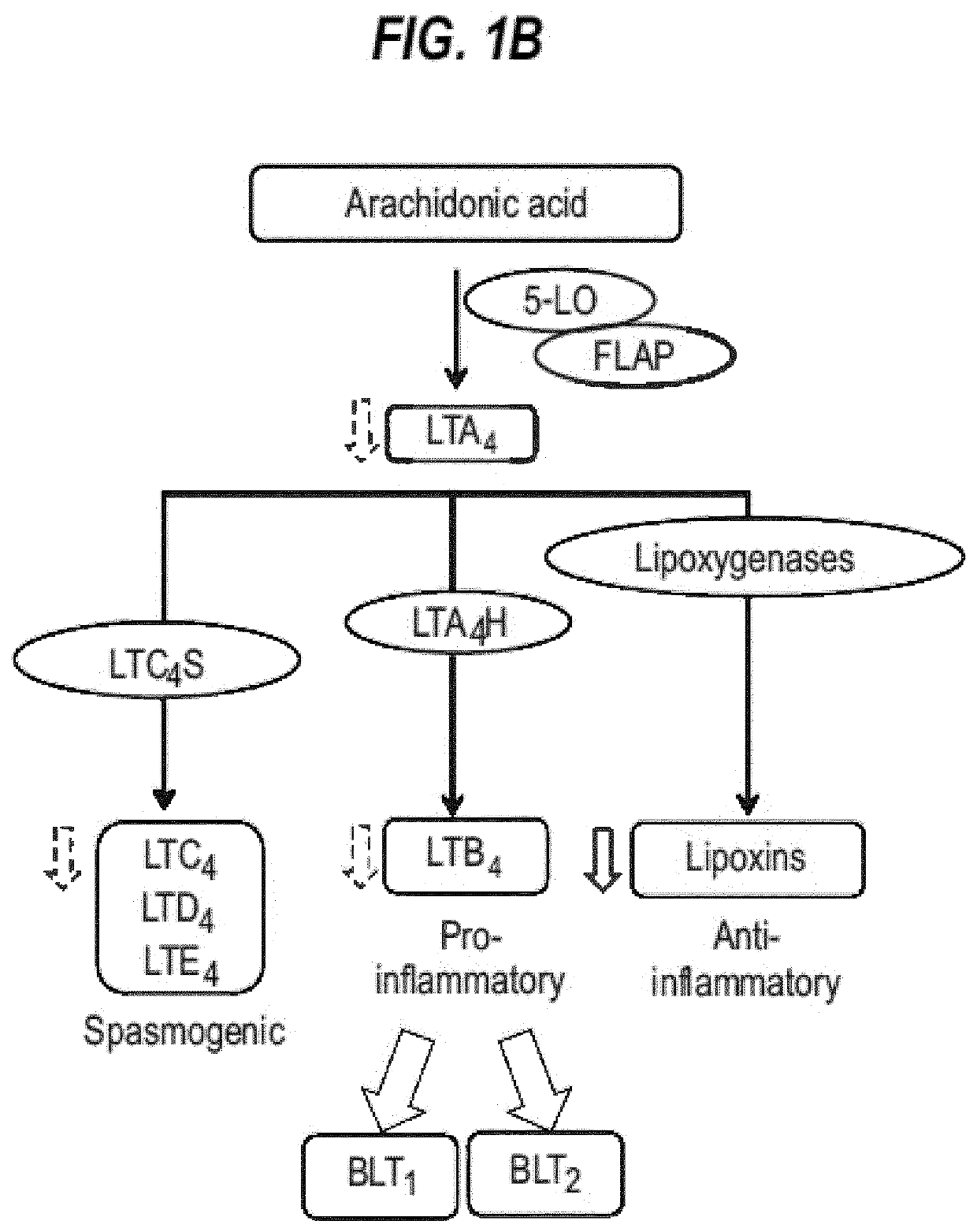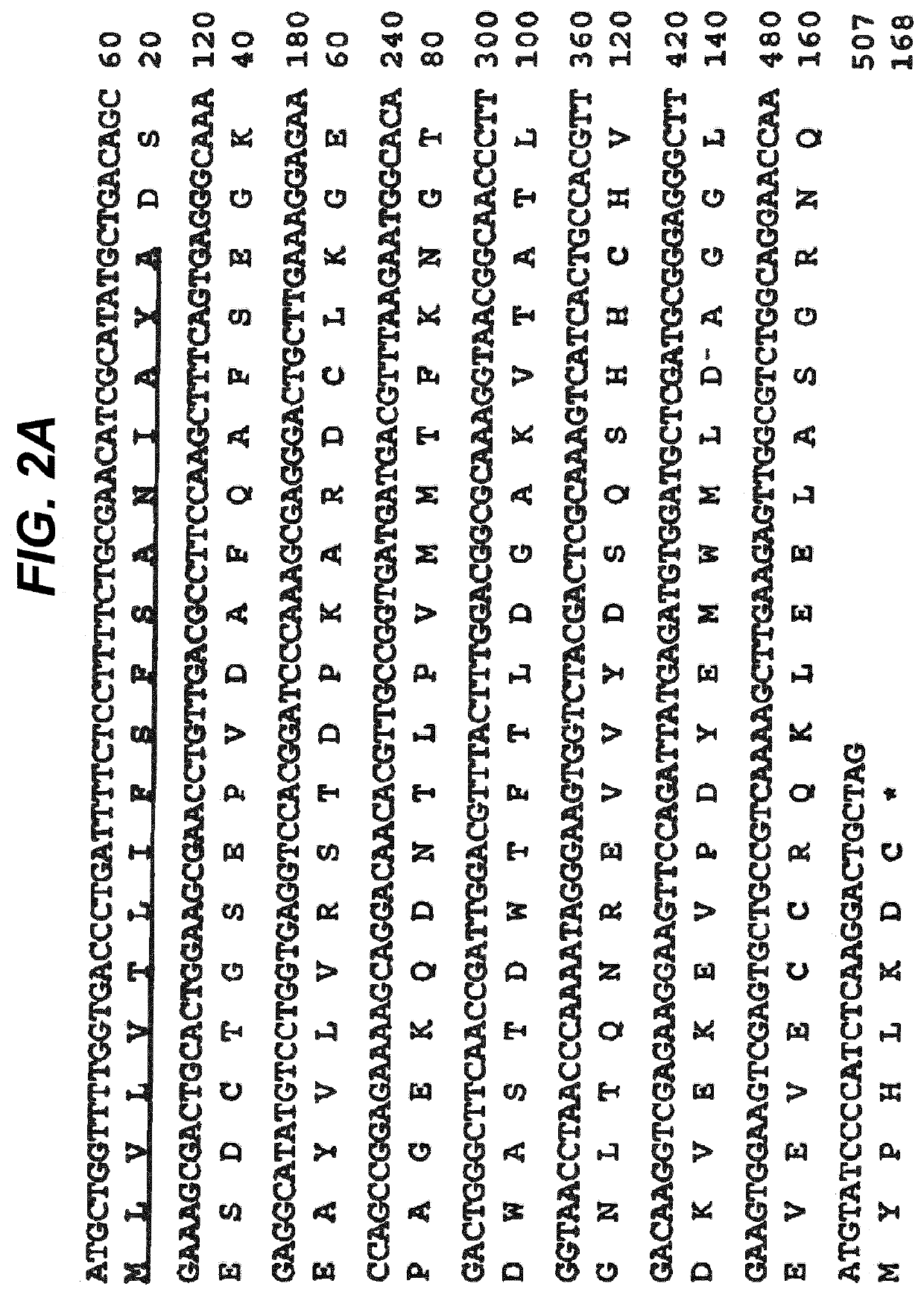Method of Treatment
a retinal disease and treatment method technology, applied in the field of proliferative retinal diseases, can solve the problems of severe visual loss, no drug that acts specifically on ltb4 or its receptors, and no experimental evidence in these applications that confirms the efficacy
- Summary
- Abstract
- Description
- Claims
- Application Information
AI Technical Summary
Benefits of technology
Problems solved by technology
Method used
Image
Examples
example 1
Treatment of EAU With Topical Administration of Nomacopan-Type Proteins
[0524]As shown in FIG. 3, following topical administration of nomacopan (5 mg / ml), PAS-nomacopan (20 mg / ml), L-nomacopan (5 mg / ml) the clinical score in EAU mice was lower compared to mice treated only with saline, with the results being statistically significant for L-nomacopan. Trends for nomacopan and PAS-nomacopan treated mice were observed. The clinical score for L-nomacopan treated mice was in line with the clinical score for dexamethasone treated mice. Mean score±SEM; 8.083±0.848; n=12) relative to saline controls (10.33±0.666; n=12; P=0.048), with no significant changes in CD4+ T cell numbers or subtypes in treated mice.
[0525]These results are surprising as it was not previously known that the test molecules could pass through the cornea. The reduced efficacy of PAS-nomacopan compared to the un-PASylated version may reflect the fact that the PASylated version is larger.
example 2
Coexpression of BLT1 and C5a Receptors in Mouse Retinal Cells
[0526]Confocal microscopy of mouse retinal sections in UAE mice using monoclonal antibodies recognising BLT1 and C5a receptors, counterstained with DAPI (blue to indicated nuclei) shows both receptors expressed in inflammatory cells. Some individual cells co-expressed both receptors, whilst many single receptor-expressing cells were also observed. It is believed that at least some of the cells are M2 macrophages which are known to migrate to areas of retinal damage where they release VEGF in response to LTB4 stimulation (see FIG. 4, 7 and Example 4).
[0527]This is consistent with other results presented herein that nomacopan-type proteins can be useful agents in treatment of such diseases (e.g. diseases in which there is an LTB4 involvement and / or involvement of the complement pathway).
example 3
Treatment of EAU With Intravitreal Administration of Nomacopan-Type Proteins
[0528]As shown in FIG. 5, following intravitreal administration of nomacopan-type proteins on days 15 and 18 (nomacopan (5 mg / ml), PAS-nomacopan (20 mg / ml), PAS-L-nomacopan (20 mg / ml), each administered in a volume of 1-2 μl to EAU mice, the observed clinical scores at day 22 was in general lower than those in the control (saline treated) mice, and the increase in clinical score between the two time points (day 15 and day 22) was less for the treated mice than for the control (saline treated) mice. PAS-nomacopan mitigated disease progression post intravitreal administration as determined by clinical scoring (mean score±SEM; 3.813±1.014; n=16) relative to saline controls (12.36±1.014; n=16; P=0.0001).
[0529]FIG. 5 also shows the composite histological scores for the various treatments. Again there was a lower clinical score following treatment with each of the Nomocopan type molecules, compared to the control ...
PUM
| Property | Measurement | Unit |
|---|---|---|
| Fraction | aaaaa | aaaaa |
| Fraction | aaaaa | aaaaa |
| Fraction | aaaaa | aaaaa |
Abstract
Description
Claims
Application Information
 Login to View More
Login to View More - Generate Ideas
- Intellectual Property
- Life Sciences
- Materials
- Tech Scout
- Unparalleled Data Quality
- Higher Quality Content
- 60% Fewer Hallucinations
Browse by: Latest US Patents, China's latest patents, Technical Efficacy Thesaurus, Application Domain, Technology Topic, Popular Technical Reports.
© 2025 PatSnap. All rights reserved.Legal|Privacy policy|Modern Slavery Act Transparency Statement|Sitemap|About US| Contact US: help@patsnap.com



